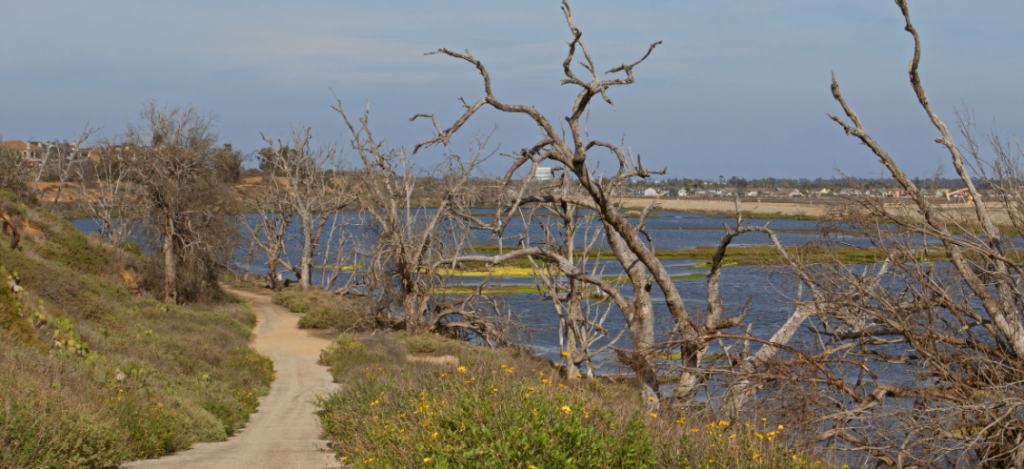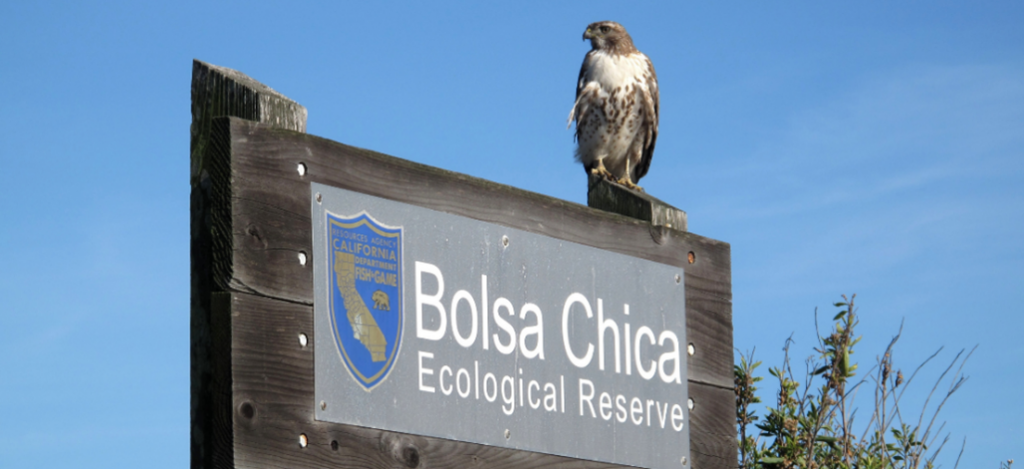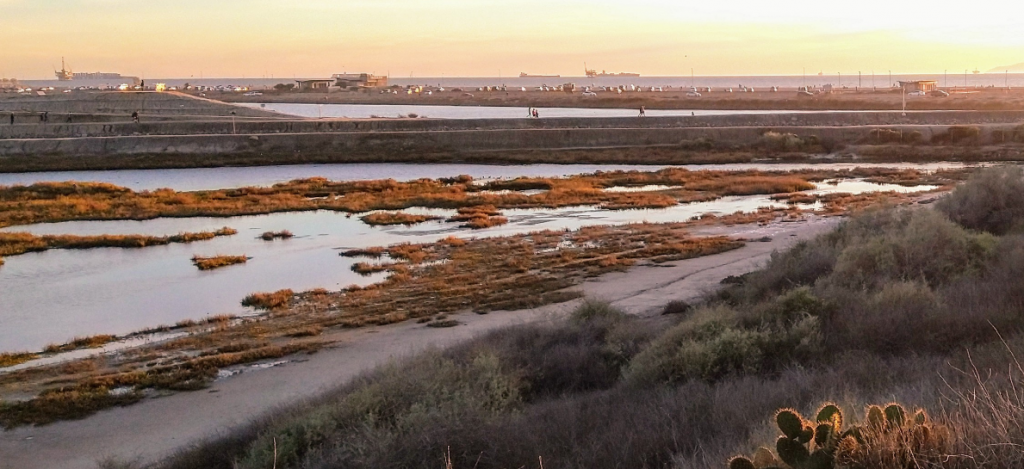Restoration at the Bolsa Chica Ecological Reserve
April 11, 2022 – David Cannon
The Bolsa Chica Ecological Reserve—a saltwater marsh home to sea creatures and breeding grounds for birds—is in need of significant restoration to maintain and preserve its sensitive ecology. Located in Huntington Beach, California, Bolsa Chica is comprised of saltwater bays, mudflats, salt marsh, coastal dunes, seabird nesting islands, riparian, freshwater marsh, coastal sage scrub, and grassland, creating a vital ecosystem for a variety of species of wildlife. The area is currently facing several threats posed by sedimentation and sea level rise, causing loss of habitat and risk to wildlife.

The Bolsa Chica Land Trust partnered with the Bolsa Chica Steering Committee to secure a grant from the California Department of Fish and Wildlife to fund the study to assess the marsh’s issues.
The landscape has been significantly altered over the years before the original Bolsa Chica Ecological Reserve was established in 1973, both by damming off the area from direct tidal flow with the ocean in the 1800s and by infrastructure development supporting oil rigs, pipelines, and service roads in the early 1900s. Today the Reserve is once again connected to the ocean and is considered a critical habitat for more than 250 wildlife species, with 230 bird species listed by the state or federal government as endangered, threatened, or of special concern. As a wetland with tidal influence, more than 50 different fish species and other marine life inhabit the open water, tidal channels, and muted tidal basins.

The Bolsa Chica Wetlands are a popular spot for photographers and bird watchers, and the Ecological Reserve makes up 1400 acres of protected wetland and upland open space with more than 250 wildlife species.
In late 2020, the Bolsa Chica Land Trust’s Board of Directors initiated a study to document Bolsa Chica’s flora and fauna, elucidate the relationships between species and their habitats, and monitor changes in the environment due to global warming and other threats. Anchor QEA prepared the Sustainable Alternatives Study for the lowland wetland system at the Reserve, which was released and featured in the Los Angeles Times and the Orange County Register. The study provided several solutions to help address issues related to sedimentation, water management, sea level rise, and the habitat’s health. It also contributes to the overall understanding of the area, laying the groundwork for successful management and restoration planning in the future.
Three years in the making, the Sustainable Alternatives Study outlines goals and alternative methods for the short-term, mid-range, and long-term management of this environmentally critical site within the Reserve. Additionally, it assesses the potential effects of sea level rise on the system. The intention was to identify straightforward and direct measures that could be undertaken immediately to address issues associated with maintaining the full tidal basin and muted tidal basin. The study found that in the short term, the best option is to continue maintenance dredging to remove coastal sedimentation in the wetlands and current water management practices within the muted tidal basin.

In cooperation with the California Department of Fish & Wildlife, the Bolsa Chica Stewards have planted over 38,000 drought tolerant, native plants with the help of more than 17,000 volunteers, transforming over 9 acres of Southern California habitat and native grassland.
Removing sediment that has accumulated in the wetlands over time can help reduce the loss of vegetated marsh and ensure that these valuable ecosystems continue to provide habitat for plants and animals while filtering pollutants from the water. Additional pumping was identified as a method to manage ocean water and stormwater to maintain a stable environment to control water levels.
In the long term, the Anchor QEA study recommended raising ground elevations within the muted tidal basin to serve as a buffer from high surface water levels associated. This is because sea level rise will continue to negatively affect Bolsa Chica at a rate greater than most other California coastal wetlands due to low ground elevations caused by oil extraction-induced subsidence. Raising ground elevations will also help protect against flooding and other damage that can occur when water levels rise.
With the continued implementation of these solutions and other ongoing restoration activities, the Bolsa Chica Ecological Reserve will continue to support a variety of sensitive plant and wildlife species, resulting in an enhanced wetland habitat. The Bolsa Chica Land Trust is committed to supporting the State Lands Commission and the California Department of Fish and Wildlife in pursuing these near-term, mid-term, and long-term measures to maintain the wetland restoration project goals. Ultimately, sustainably managing this part of the Bolsa Chica Ecological Reserve will greatly increase the biodiversity and resiliency of its critical habitats.
Explore News Articles on the Bolsa Chica Ecological Reserve Study
Huntington Beach City Council moves forward with Bolsa Chica feasibility study | LA Times
Related Insights
How To Build Coastal Resilience and Implement Restoration Projects in the Carolinas
March 16, 2022 – Ram Mohan, P.E. Ph.D. F. ASCE. and Matt Henderson P.E.
Continue Reading »Coastal Resiliency Considerations for America’s Four Coasts: Preparing for 2100
September 10, 2021 – Old City Publishing Inc.
Continue Reading »
